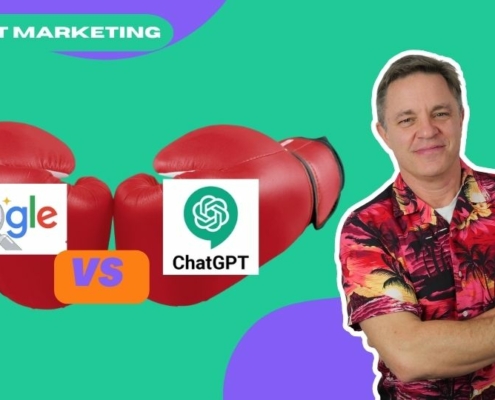Marketing budget success begins with SMART Goals.
What are SMART goals? The SMART in SMART goals stands for Specific, Measurable, Achievable, Relevant, and Time-Bound. Defining these factors will mean your goals work perfectly for your business.
An example here might look like this:
For United Chocolate, the goal for FY 2025 is to achieve £2m turnover while maintaining our net 20% profit margin.
We know the time limit and numbers, which are all relevant to us.
But it’s a little dry – it doesn’t yet set our hearts on fire, right?
Bring the power of emotion to your goal-setting
The final part of successful goal-setting is to bring in the power of emotion to drive consistent action. We call it our ‘tough times’ statement.
A tough times statement gets you through the challenges, the setbacks and the difficult moments on your journey. It turns the raw numbers into real impacts on people’s lives. Notably the business ownership!
Build it like this:
- The issue we are addressing
PLUS
- The impact it will have
PLUS
- How important it is to our lives
So, in the case above, we have:
Hitting our £2m target will see the end of patchy growth and the problems that come from it – the inability to invest in the much-needed new plant and machinery and critical people. New people and machines will end the horrendous stress of break-downs and mean that, as a business owner, I can finally take my family on that dream holiday they talk about, and I feel so guilty about being unable to afford.
So, for the business owner, we have now connected this revenue growth with the idea of taking their loved ones on holiday, which will give them memories to last a lifetime.
Who could possibly avoid the work now?
How many new clients do you need?
Now, we get into some elementary mathematics. We need to know how many new clients we need to hit our goal. In the case of a restaurant, you might need ten new bookings every day of the year, whereas a large real estate company may need one new client every month.
This is: Total new revenue needed/lifetime revenue per client
Action: Get your number and write it down on your worksheet.
How many leads do you need to book a discovery call?
This is another straightforward calculation, and if you’re not collecting data, then this will involve some guesswork, but at least make it educated guessing. How many leads do you need at the top of your marketing funnel to make a discovery call booking pop out lower down?
This is: The total number of people in the form of filled-in contact forms, newsletter sign-ups, scorecard completers etc.
Action: Get your number and write it down on your worksheet.
How many of those discovery calls are sat?
We know that not every discovery call will happen – there will be people who don’t show up, so let’s now make sure we account for that to have the number of leads needed to create an actual discovery call.
This is: The total number of people who attend a discovery meeting
Action: Get your number and write it down on your worksheet.
How many discovery calls turn into a client?
Unless you have a 100% success rate with your discovery calls, there will likely be a drop-off here, so again, we need to account for that.
This is: The number of discovery meetings you must have to create a new client.
Action: Get your number and write it down on your worksheet.
How much does each lead cost?
The final piece of our puzzle is to understand how much a lead costs to generate. Now, there are some brilliant marketing tactics you can use which are ‘free’ in terms of costs but require a lot of time. You must put a number towards the time to ensure that we resolve this as a figure in money and nothing else.
This is: The total cost of all your marketing/the number of contacts that appear in your funnel.
Action: Get your number and write it down on your worksheet.
A complete example of marketing budget setting for your business.
Revenue Target: £250,000
How many new clients are needed if each client is worth £25k?
We need 10 new clients
How many actual discovery calls turn into business?: 50% (One in two)
We need 20 discovery calls to happen.
How many discovery calls are sat? Three out of four
We need 28 discovery call bookings.
(this should generate 21 attended discovery calls but we’ll call it 20 for easier maths.)
How many leads do we need if we know that one in ten leads becomes a discovery call booking?
We need 280 leads
Our cost per lead is £80
What is our marketing budget if we need to generate 280 leads at £80 each?
We need to a £22,400 marketing budget.
The big mistake most companies make is simply not doing the maths and setting a budget that is simply a minimised expense, not a strategic investment.
The big mistake: A final note on marketing budget setting.
For subscription or ongoing clients, most businesses are willing to spend between one and two months of revenue from a client to win that client. They can then be safe knowing that the business will be profitable.
For project work, you will want to come up with a number that still leaves you plenty of profit from that client. 15-30 % of revenue is a range we see.
In both cases, the overwhelming majority of businesses do not understand this and tend to kill any growth before it starts by setting a marketing budget that is far too low
Now you’ve set your marketing budget – make every penny count.
Setting your budget is the first step; the second is ensuring every penny counts in your marketing budget and has a real impact. We’ve seen money wasted in various ways – notably promoting a website that Google doesn’t like or has the wrong content.
Get your FREE website audited today from the expert team here at The Ambitions Agency this will make sure you don’t waste money and provide a fascinating glimpse into your digital footprint.
 https://theambitionsagency.com/wp-content/uploads/2024/03/New-Website-tiles-project.jpg
720
1280
Liyana van Wyk
https://theambitionsagency.com/wp-content/uploads/2022/06/Ambitions-Agency-logo.svg
Liyana van Wyk2024-06-05 12:00:562024-06-05 06:16:28Unlocking the Secrets of SEO
https://theambitionsagency.com/wp-content/uploads/2024/03/New-Website-tiles-project.jpg
720
1280
Liyana van Wyk
https://theambitionsagency.com/wp-content/uploads/2022/06/Ambitions-Agency-logo.svg
Liyana van Wyk2024-06-05 12:00:562024-06-05 06:16:28Unlocking the Secrets of SEO











